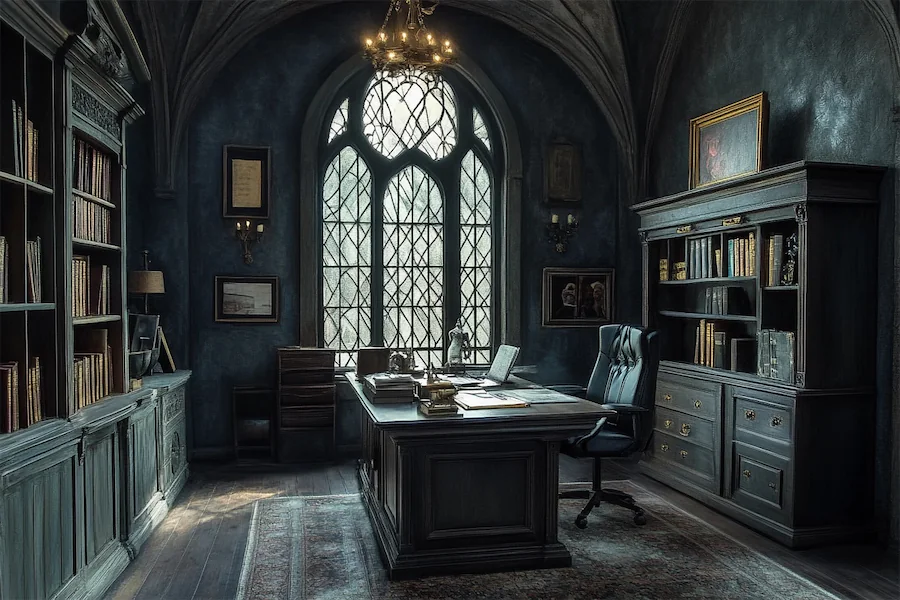Gothic office rooms exude a dramatic and sophisticated ambiance, characterized by dark color palettes, intricate architectural details, and opulent furnishings. This article explores their origins, key features, applications, considerations for selection, and their relevance in contemporary design.
Introduction to Gothic Office Rooms
Gothic design, originating from medieval European architecture, emphasizes verticality, ornate detailing, and a sense of grandeur. In an office setting, this style creates a unique and inspiring environment, blending historical elegance with functional workspace elements.
History and Origins of Gothic Office Rooms
The Gothic architectural style emerged in the 12th century, characterized by pointed arches, ribbed vaults, and flying buttresses. This style influenced interior spaces, incorporating elements like intricate woodwork, stained glass, and elaborate ornamentation. Incorporating Gothic design into office spaces brings a sense of history and drama, creating a distinctive atmosphere.
Key Features of Gothic Office Rooms
- Dark Color Palettes: Utilization of deep hues such as black, burgundy, and navy to establish a moody and elegant ambiance.
- Ornate Furniture: Inclusion of intricately carved wooden desks, high-backed chairs, and antique bookcases that reflect Gothic craftsmanship.
- Architectural Details: Incorporation of pointed arches, vaulted ceilings, and decorative moldings to enhance the Gothic aesthetic.
- Luxurious Textiles: Use of rich fabrics like velvet and brocade for upholstery and draperies, adding texture and opulence.
- Ambient Lighting: Employment of wrought iron chandeliers, candelabras, and wall sconces to create a warm and inviting glow.
Applications of Gothic Office Rooms
Gothic design can be applied to various office settings:
- Home Offices: Creating a personal workspace that reflects a love for historical and dramatic design elements.
- Law Firms and Libraries: Establishing an environment that conveys tradition, authority, and intellectual depth.
- Creative Studios: Providing an inspiring backdrop that stimulates creativity and artistic expression.
Considerations When Choosing Gothic Office Rooms
When designing or selecting a Gothic office room, consider the following:
- Space and Scale: Ensure the room’s dimensions can accommodate the grandeur and scale of Gothic furnishings and architectural details.
- Lighting Balance: While ambient lighting sets the mood, incorporate task lighting to ensure functionality for work-related activities.
- Authenticity: Incorporate genuine antique pieces or high-quality reproductions to maintain the integrity of the Gothic style.
- Comfort: Select ergonomic furniture that combines Gothic aesthetics with modern comfort to support productivity.
- Personalization: Add personal touches, such as artwork or accessories, that reflect individual tastes while adhering to the Gothic theme.
Conclusion
Gothic office rooms offer a distinctive blend of historical grandeur and functional design, creating spaces that are both inspiring and practical. By thoughtfully incorporating key Gothic elements, one can design an office that reflects the timeless elegance of this architectural style while meeting contemporary work needs.
